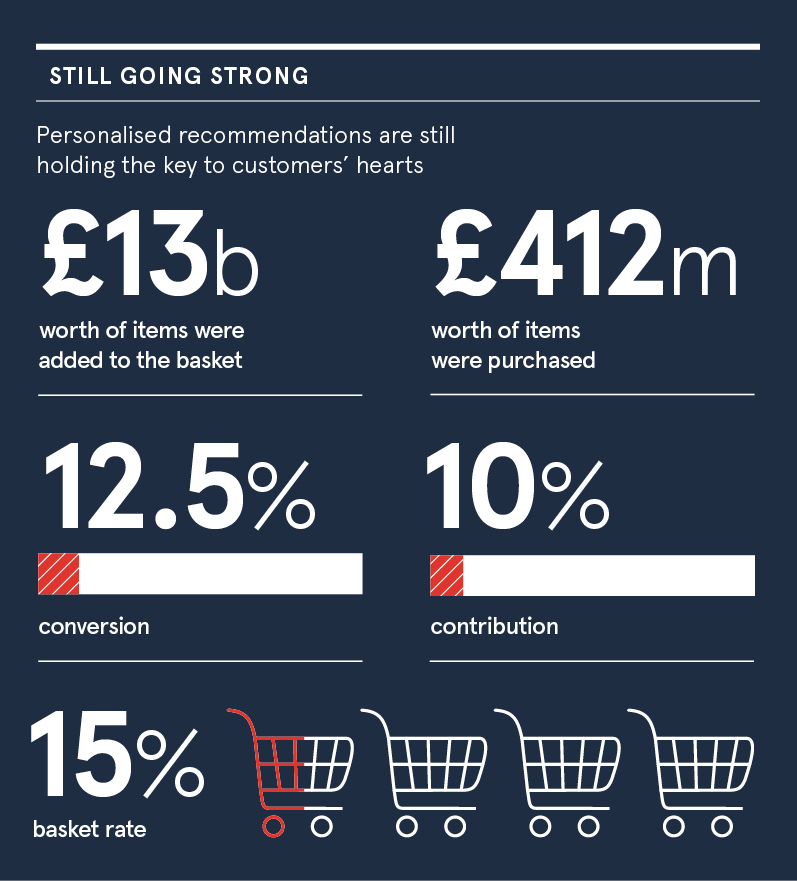Ecommerce retailers display thousands of products and services on their websites each day, but from this deluge, most consumers engage with only 20 to 25 products during a site visit. The onus on sellers, now more than ever, is to ensure the right 20 to 25 products are greeting every individual.
This notion of personalisation is key, especially among fashion and fast-moving consumer goods retailers, according to Murat Soysal, co-founder and UK chief executive of Segmentify, a company that has taken the initiative on behalf of ecommerce operators to bridge the gap between digital’s advantageous efficiency and scope, and its restricting lack of personability.
“Customers come and go so quickly, making immediate decisions on whether to explore a product they are faced with more deeply or not,” he says. “Ecommerce retailers need to be even quicker, using an ever-improving data pool to get ahead of the game and make sure the right products are greeting each individual to improve the chance of improved engagement and uptake.”
In the future product recommendations will be so effective they will suggest products that will fit individuals without doubt
Segmentify’s role as an ecommerce personalisation platform addresses and champions each customer’s individuality, beginning at a company’s website and branching out across all marketing methods and promotional material.
“It’s all about creating a consistent and personal customer journey for every visitor,” says Mr Soysal. “The move from traditional commerce to online and omnichannel brings so much opportunity and flexibility, but also so many potential pitfalls.
“There are companies out there that are greeting customers online with the promotion of size nine running shoes, when they’re actually out of stock in that size, or recommending washing machines to people who only bought one a month previously. It’s one thing to generate data on individuals, but converting that data into an accurate personalised journey for each is a bottleneck.”
When Segmentify incepted in 2015, its aim was to turn all its own customers into Netflixes and Amazons. Both global heavy weights have thrived from their artificial intelligence or AI-driven approach to the customer experience, ensuring each viewer or buyer is greeted with a personalised set of options as opposed to a random sample of shows or products.
“Of course, these companies have huge AI and machine-learning budgets, but you don’t need that level of investment to achieve the same results,” Mr Soysal explains.
Across an ecommerce operator’s website, email blasts, SMS channels, push notifications and even brochures, the emphasis needs to be on providing a personalised array of options akin to these giants. For those that do so effectively, Mr Soysal affirms that the benefits can be both extensive and almost immediate.
“What we do to a client’s website is quite transparently trackable and return on investment is easy to evaluate,” he says.
“If consumers are presented with four products on a website via a special widget, they click on one option, add it to a basket and buy it, you can deduct that personalisation has had a direct link to that sale.”

Segmentify has helped retailers achieve, on average, 10 per cent revenue contribution from such widgets and this extent of improvement is now a minimum expectation from a concerted personalisation strategy using AI tools.
“This can be achieved by just adding one line of code to their website and the benefits are seen within two weeks,” says Mr Soysal.
He believes personalisation will continue to prove itself as the main differentiator from a customer experience perspective, especially given the machine-learning tools it’s leveraging.
As more and more customer data is gathered, the tools at hand will become smarter, the propositions to customers will improve further and return on investment will make for more enjoyable reading.
“It will improve not just what is recommended, but how it is recommended too,” says Mr Soysal. “In the future product recommendations will be so effective they will suggest products that will fit individuals without doubt. Powered by augmented or virtual reality, retailers will be able to provide recommendations that suit a person better than they could even browse themselves, based on previous choices.
“The more we learn about each individual customer, the better the personalisation journey will be for end-consumers as the notion of customer experience enters this next era of digital disruption.”
For more information please visit www.segmentify.com

